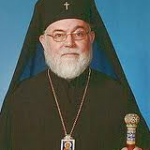
Deprecated: trim(): Passing null to parameter #1 ($string) of type string is deprecated in /home/aoiusa/public_html/wp-content/plugins/sexybookmarks/public.php on line 388
Deprecated: trim(): Passing null to parameter #1 ($string) of type string is deprecated in /home/aoiusa/public_html/wp-content/plugins/sexybookmarks/public.php on line 394
Deprecated: trim(): Passing null to parameter #1 ($string) of type string is deprecated in /home/aoiusa/public_html/wp-content/plugins/sexybookmarks/public.php on line 400
 The CEOYLA struggled for years to please the hierarchs and the clergy, to be understood, to be accepted, to be messengers of a unified Church in North America, but to no avail. They didn’t know what they were doing ‘wrong’ or what was considered ‘acceptable.’ The Church withdrew or let languish its support of the CEOYLA and the young of the various ‘jurisdictions’ stood apart, as though some form of invisible ‘ecclesiastical Berlin Walls’ had been erected between them. (Bp. Nathaniel Popp in Solia – The Herald, April 2000.)
The CEOYLA struggled for years to please the hierarchs and the clergy, to be understood, to be accepted, to be messengers of a unified Church in North America, but to no avail. They didn’t know what they were doing ‘wrong’ or what was considered ‘acceptable.’ The Church withdrew or let languish its support of the CEOYLA and the young of the various ‘jurisdictions’ stood apart, as though some form of invisible ‘ecclesiastical Berlin Walls’ had been erected between them. (Bp. Nathaniel Popp in Solia – The Herald, April 2000.)
Source: Orthodox Christian Laity (OCL)

By Archbishop Nathaniel (Popp)
As everyone knows, a flower has the potential to become fruit, which, in turn, bears seed that is a source of new life. An old German song entitled “Where have all the flowers gone?” referred to the young men who had been sent off to war. It was a verifiable assumption that many would not return to initiate new life in society. What a dismal future this foretold, youth nipped in the bud!
Do we have a similar situation in the Church today, not in context of political warfare but in the context of youth losing the warfare for their eternal salvation? No one knows the true number of those who have left or leave the Church in search of spiritual nourishment elsewhere or who abandon faith in the Divine. The attendance of young people at divine services and educational programs brings us to the real assumption that they do not hold Church worship as a priority. We all acknowledge that once they are out of the parish and family situations, they are not as involved with the Church as they ought to be. Does the Church recognize this, and is she also doing something about it?
A glance at the history of the Church in North America shows us that youth has fared poorly at our hands. Because of the unintelligibility of liturgical languages, a tendency to “Americanize” to accept that all beliefs are “the same” which caused a crisis of indifference and confusion in their minds, and because of other reasons, the Church has lost generations of young people.
Where is that tender flower, the “CEOYLA?” The Council of Eastern Orthodox Youth Leaders of America once represented most young Orthodox of various ethnic jurisdictions. The CEOYLA began from a desire of the young people to be together; it was not the creation of an external authority but of a recognition of oneness of faith. The CEOYLA was strong, as strong as the groups of which it was composed, but this fertile ground was neglected. Instead of being filled with guidance, it went unattended by parish clergy and lay leaders, and the hierarchy.
What titanic measures these young leaders had to undertake to receive a modicum of permission (a blessing) to meet together, socialize together, pray together, witness together to their common Orthodox faith! Their good intentions, their innocent programs to know one another, to serve the Church in America, to create a working basis for the future, were overcome by the weeds of leadership-indifference.
The CEOYLA struggled for years to please the hierarchs and the clergy, to be understood, to be accepted, to be messengers of a unified Church in North America but to no avail. They didn’t know what they were doing “wrong” or what was considered “acceptable.” The Church withdrew or let languish its support of the CEOYLA and the young of various “jurisdictions” stood apart, as though some form of invisible “ecclesiastical Berlin Walls” had been erected between them.
Today, the Church in North America is reaping the fruit of the death of the CEOYLA. Much of that “future” left the Church, frustrated, disappointed, angered, “turned-off”, sidelined. Judging from the number of mixed marriages, indifference by local parishes to spouses who had converted to Orthodoxy was a major factor, and many of these good-intentioned neo-converts, and their Orthodox spouses, in frustration, left the Church for a church which embraced them and in which they felt their spiritual needs fulfilled. Instead of being fertilized with love and concern, respect and support, the CEOYLA was judged insignificant, brash, ill-timed, even “disobedient.”
There are some CEOYLA people who reminisce about the programs and dreams they had formulated and who nourish the hope that “something” similar to the CEOYLA can still be created. They did not all leave the Church, although their hearts still ache and bear the scars of the indifference of the Church’s leadership. They consider hierarchal withdrawal of support as the death blow dealt to the CEOYLA.
What concrete actions did the Church take for the youth? Which are examples over the decades of any united effort to guide the youth in its witness to the Lord? In the meanwhile, the new youth watch and wait; wait and are placated; placated and drift; drift and abandon, because the Church does not work together with the youth.
Christ never said that the “ethnic” planting of the Church in America would bear future fruit. He said that the powers of darkness would not prevail over the Church through the eons. A two hundred year old vine does not assure a fruitful plant; the leaders of the Church must tend the young people and cultivate them to produce the fruit of the Church today, let alone tomorrow. Indifference to youth is indifference to Christ.
In recent times, general support has come forth from all jurisdictions for the International Orthodox Christian Charities (IOCC) and the Orthodox Christian Mission Center (OCMC), two activities which sprang up in response to pan-jurisdictional needs. Credit must be given to those who initiated the IOCC, which was then adopted by the Standing Conference of Canonical Orthodox Bishops in the Americas (SCOBA), and to the Greek Archdiocese as the foundation for the OCMC, which was also adopted by the SCOBA.
Is it not equally important to have all-out “jurisdictional” support for the youth in as “united” an effort as has been given for charity and mission? Admittedly, each “jurisdiction” may be doing its “own thing,” but is this not a terrible judgment on the entire Church? The Church is One Body, and no one can assume the luxury of not being concerned for the entire youth. “We’re doing our thing for our kids,” is not an acceptable, mature and Christian refrain. All kids, all young people, are members of the One Church and not of temporary “jurisdictions.” Does the hierarchy have a national youth organization on its docket?
Most Orthodox peoples around the globe have their own national Orthodox youth organizations. Not so, the Church in North America. We, this great nation, have no Orthodox youth representation neither as a witness here nor a witness abroad (Just as we have no representation in the plans for the “Great Synod” which is yet to come.). After the skeleton CEOYLA was brought down, nothing else was erected in its place. How we laud and praise “Syndesmos,” but create no Orthodox American Youth Organization! Is it not unusual to praise what others have and neglect to do the same for oneself? To admire “Syndesmos” and to not be concerned for our own youth is unacceptable. It is time for the hierarchs to act! It is time for unity of action with all diocesan and parish leaders! There needs to be a National Orthodox Youth Organization.
Where have all the flowers gone? Look around and see. Where have all the flowers gone? Pressed dry between the pages of the empty catalogues of our materialistic, consumer-based society, syncretism of belief, the screen of internet claims to “truth” and our own weak, inexcusable indifference. “Now is the time, says the Lord, I will grant them the safety they sigh for.”
Originally printed in Solia-The Herald, a publication of the Romanian Orthodox Episcopate of America, April 2000.
